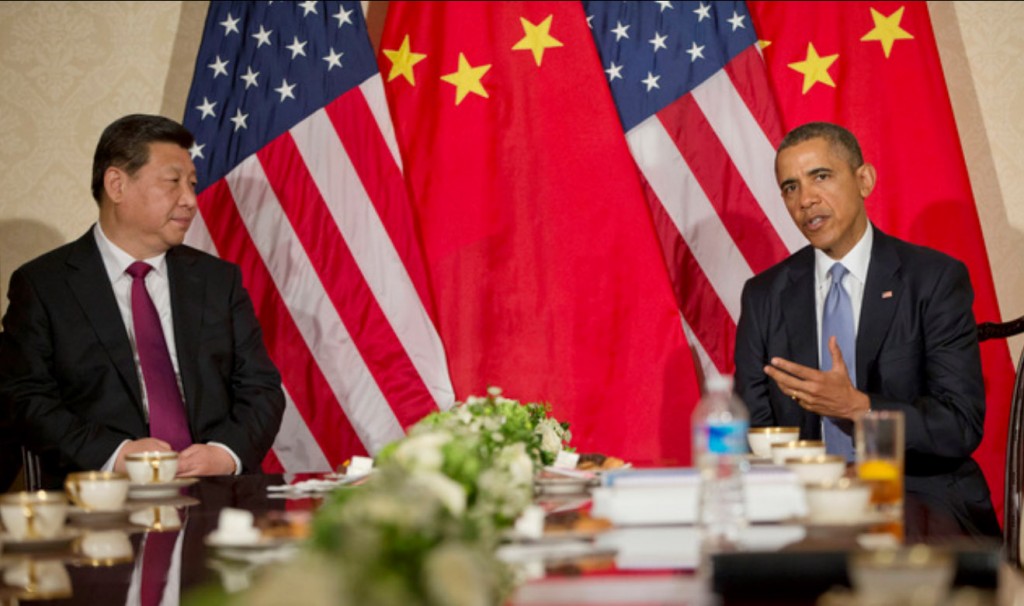The headline says it all. Just a quick look at the New York Times: “As Xi and Obama Stress Common Ground Stubborn Differences Persist“. Or an earlier headline from the same paper: “U.S. and China Agree to Cut Tariffs, but Vie for Trade Blocs“.
Let’s be clear, however. It’s been a good couple of days for global summitry. As Dan Drezner headlined in his Washington Post blog post this morning: “Best APEC Summit Ever“. As Dan suggested:
This year’s APEC summit that just wrapped up in Beijing is therefore highly unusual… because stuff got done. Seriously, a LOT of stuff got done.
Let’s tick off just a number of the accomplishments. After a tense and difficult period of relations between Japan and China the leaders of the two countries met. It wasn’t warm, nor was it congenial, but the 4 point declaration seemed to show a way forward with dealing with East China Sea Island disputes. In fact the two countries agreed to build a crisis management mechanism and prevent deterioration in the situation. In moving forward they did so by adroitly side-stepping the sovereignty issue over the Senkakus or the Diaoyu islands. And the pathway forward was material enough to allow the two leaders to end China’s refusal to meet with the Japanese Prime Minister Shinzo Abe.
On the US-China side a series of agreements were announced from extending visas for Americans and Chinese to an agreement to expand the product scope of the Information Technology Agreement (ITA) which China has resisted for over a year, to protocols on how military forces from the two sides would conduct themselves in their encounters with each other. And finally, and probably the biggest deal is an agreement for both to reduce their CO2 levels. Beyond this agreement for targeted reductions in CO2 is that agreement of the two biggest CO2 producers – accounting for nearly 40 percent of CO2) is an important impetus for greater effort by others to reduce CO2 and to achieve agreement at the multilateral level where a draft Treaty will be unveiled in the December Lima Peru meeting and then the hoped for finalization of the Treaty in Paris at COP21 in 2015.
Okay so back to the top and the ambivalent headline. Building a global order does not suggest that national interest and indeed national rivalry magically disappear. It is not surprising – indeed it is to be suspected – that just because there is agreement over significant global order issues that the competition for regional or global leadership will continue. China hopes to be the key player in Asia and the US is determined to retain its key presence in Asia. So agreeing to expand the ITA doesn’t then eliminate the contending trade and investment visions that China and the United States are proposing. China is continuing to press to initiate the Free Trade Agreement of the Asia-Pacific – the FTAAP, while the United States is still determined to rap up the Trans Pacific Partnership – the TPP. Those contending regimes are not about to go away.
Global order management extends collaboration, reinforces certain norms, and creates or adds rules in critical global order management areas. But such added order inducing steps are achieved while national interest and rivalry continues. The successful efforts constrain great power behavior – they don’t erase it.
Dan concludes his post this way:
If you step back, however, the combined effect of the summit reveals a big friggin’ deal. After a year in which there has been a lot of loose talk about the collapse of global order, the combined effect of these agreements is significant. At a minimum, they suggest forward momentum on both climate change and trade, and that tensions in the Pacific Rim will not be boiling over anytime soon.
So now on to the East Asia Summit (EAS) and then on to the G20 Leaders Summit in Brisbane. Let’s see if leaders can add to the score.
Image Credit: Creative Commons – US Embassy the Hague


